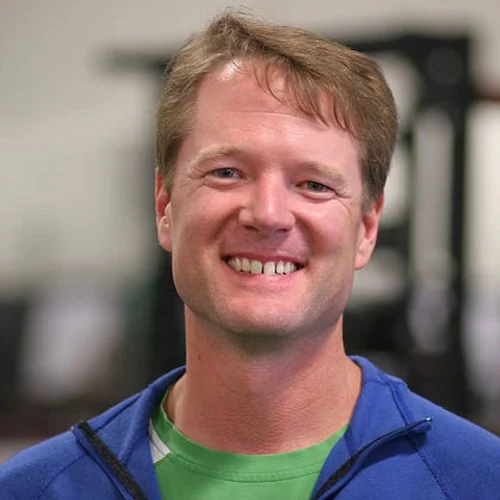[mashshare]
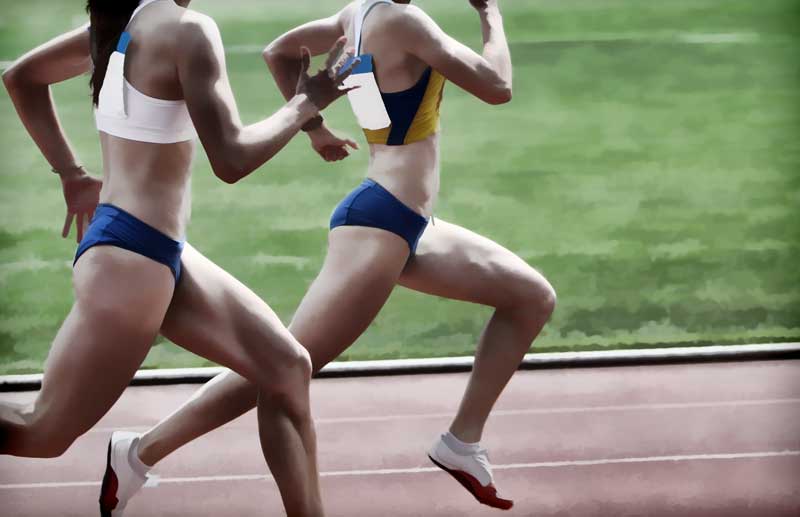
I thought I knew all of the butt exercises. I bought the books and tried the exercises. But, what I found interesting is that sometimes athletes wouldn’t feel it in the butt. I couldn’t figure that out for the life of me. It is a butt exercise, but they don’t feel it in the right place. In my quest for this Holy Grail in training for speed, I started to learn about compensation patterns or the body using alternative muscles because the one that is supposed to do the work is not. So, if the glute does not extend the hip when it is supposed to, the hamstring or the spinal erectors will do its job. Why does this happen? It could be lots of reasons, ranging from stress, injury, inflammation, lack of opposing muscle inhibiting the drive of the opposite muscle or even lack of neural drive. In reality, no one knows.
But being the questing knight that I am, I needed to learn all I could. Dan Fichter and I were on a similar path. We both realized that this scenario existed but needed to learn how to fix it. Dan found a Cape Town, South African “Physio” who seemed to have a solution to our problem. Dan decided to fly out London, England to see what Douglas Heel had to say about our situation. I get a phone call from Dan from London. He is blown away by Douglas’ presentation. Through some negotiations, we convince Douglas to come to Chicago to present on his work. On a warm June day in Prairie Medical offices, Douglas rocked our world. What Douglas says takes the glute question back a couple of steps. He is concerned with hip flexion. He wants to know what muscle causes hip flexion. It can be the psoas, quad, calf or opposite arm. Hence, he shows us a chain of compensation patterns. Ideally, the psoas is the hip flexor if it doesn’t do its job, the quad or calf or opposite arm will do the job. And, if the psoas is not doing its job, reciprocally, the glute usually won’t be doing its job in hip extension. Again, it could be a variety of muscles to extend the hip as well—hamstrings, calves, quads, erectors or arms. What Douglas shows is how to disrupt the current recruitment and reset it to the proper recruitment pattern.
What we learned was how to determine what was an athlete’s main driver. And what was interesting was that when someone had a compensation pattern in their movement you could see it. So an athlete who was an arm driver would have an over-exaggeration in their arm swing, in their sprint or their timing. They would be off in their vertical jump where the arms were moving before their legs, therefore losing power and height on their jump. So, when a coach is telling their athlete to lift their knees higher, it may be impossible. The psoas is responsible for bringing the knee above a right angle between torso and thigh, and their psoas may not be the main mover. If a quad is the main mover, the quad can only get the knee so high because the psoas is not there to finish the movement. If an athlete is an arm driver, the knee can only go so high because the arms are synchronized. The arm can only go so high before the other arm is going to come through (this is why I am not a big fan of bounding, the timing is very different from sprinting). From the extension viewpoint, an arched back at toe-off is an athlete who is extending through spinal erectors.
When we learned to break up the pattern, we had athletes who felt completely different when they got up to move around. The immediate impact was on flexibility. Some people improved by as much as 30 percent in their hamstring range of motion. The reason being for this is when the brain senses that the body is in line, and the proper muscles are doing their respective job, it will let the other muscles go. If the glute is doing its job as a hip extender, the hamstring can relax and will lengthen. It reminds me of a coach who saw other teams being very flexible and tried to make flexibility a priority on his team and spent a fair amount of time stretching daily. His athletes’ bodies may not have been recruiting their muscles optimally, and they were tightening neurologically. The extra stretching may have been causing more damage than helping.
When the athlete tries out the new recruitment pattern, they feel light and springy. It is always fun to watch older ex-athletes go out and run and feel like they are young again. It is even better when competing athletes go and run or jump. A completely different athlete emerges. Timing patterns are back to normal, and they feel fast. And in most cases they are. We have set up timers and had athletes run a few flies. Douglas activated them, and they ran PR’s. We even tried it at an Indoor conference meet and the runner ran one of the fastest 800m runs in the state. A PR by 3 seconds. When they jump, they feel like they are flying. In some cases, we have measured a 2 inch increase in their vertical, on a pad. Why does this work? It works because the brain recognizes the correct pattern and will give power to the proper muscles. Don’t agree with that statement? Drop a weight on your toe and see how much power your brain will give your leg of the smashed toe. Think it is carnival tricks. Most people think that until they feel the difference after they go through an “activation”. Some people will discount it but have never experienced it.
How does this carry over to best glute exercises? To get the most out of your biggest muscle, it needs to be firing on all cylinders. And this is the “trick” to get it to go. When your brain learns that it can use all of the muscle, it will. This brings me to my first two exercises. Both of these go along with the activation stuff. The first movement is what we call a butt bungee. There is an actual butt bungee for sale on Douglas’ site. I usually have some, but they seem to grow legs when we take them to track meets. So, we take a big jump stretch rubber band and anchor it to something, like a pole and put the band around your waist. This is the important part; when you walk away from the pole and the slack tightens, you should feel your glutes tighten slightly. If you feel it in a different muscle, quads, etc., slightly move the band to a position where you feel the butt tighten. The glutes are now the driver. With feet square, reach your butt back as far as you can. You can bend knees slightly, but don’t squat. From the side, you should look like you are in a piked position. From here, drive your hips forward. You have now completed a hip thrust. The glutes should have been the main driver. This is mostly what it does. Complete about 10 of them and step out of the band. The athlete should feel like he is walking effortlessly. The glutes are now the driver. For naysayers, we have tried to have people complete the exercise when their glutes are deactivated and have found they don’t have the same feeling when they walk out of the band and their body moves differently as well. The exercise is for feel not how much you can do. We will get to power later. This is just the beginning of this glute thrust. We mix in breathing, voice and vision to see how to get the most out of the thrust. We got Stanford Women’s basketball guard Toni Kokenis to learn to use her voice with her glutes, and it changed her game. She held the streak for free throw percentage in NCAA most of the season a couple of years ago.
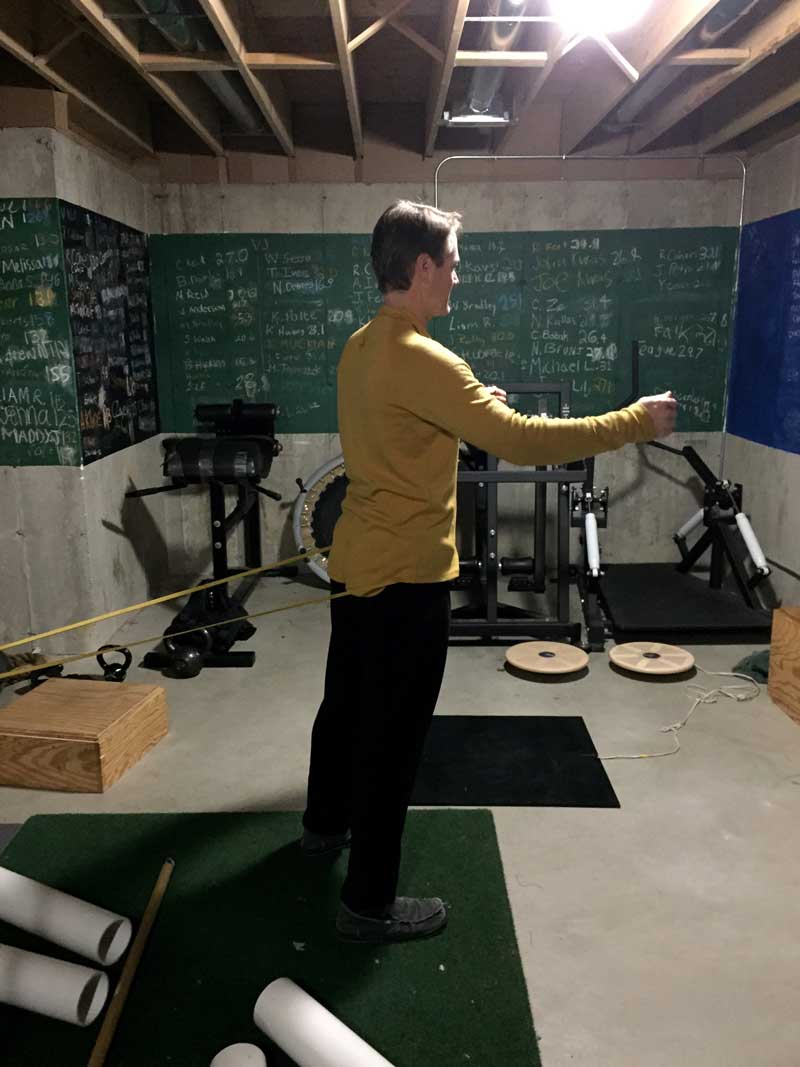
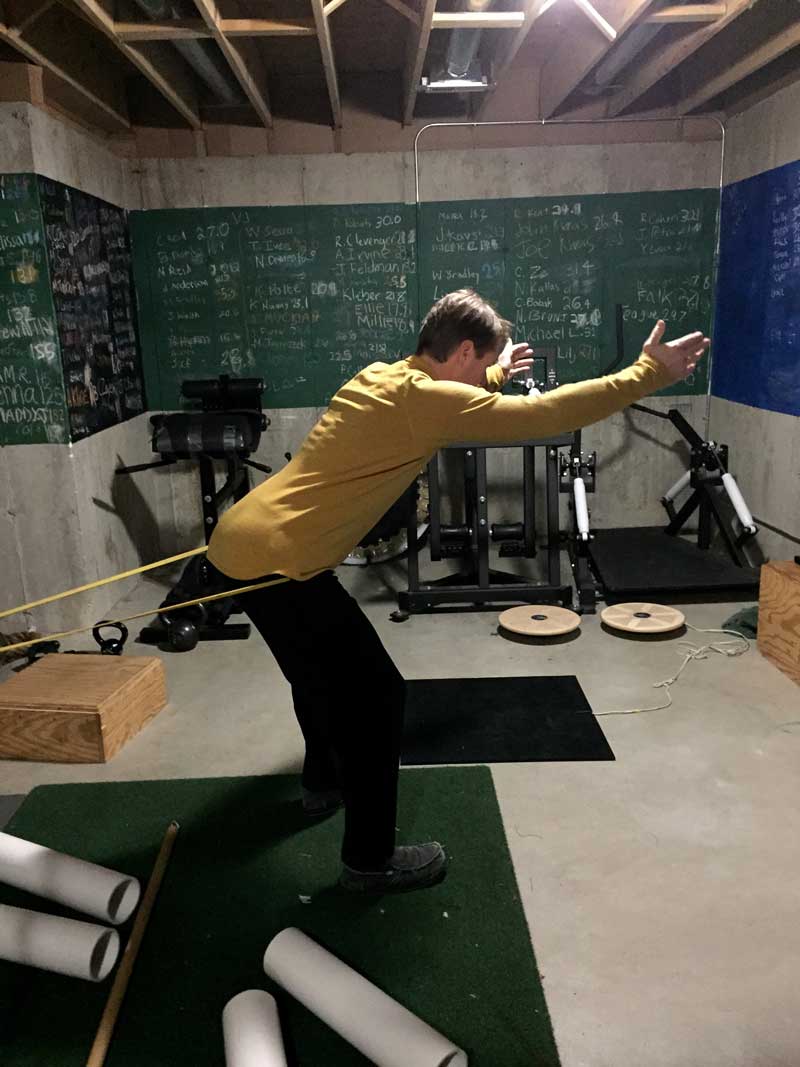
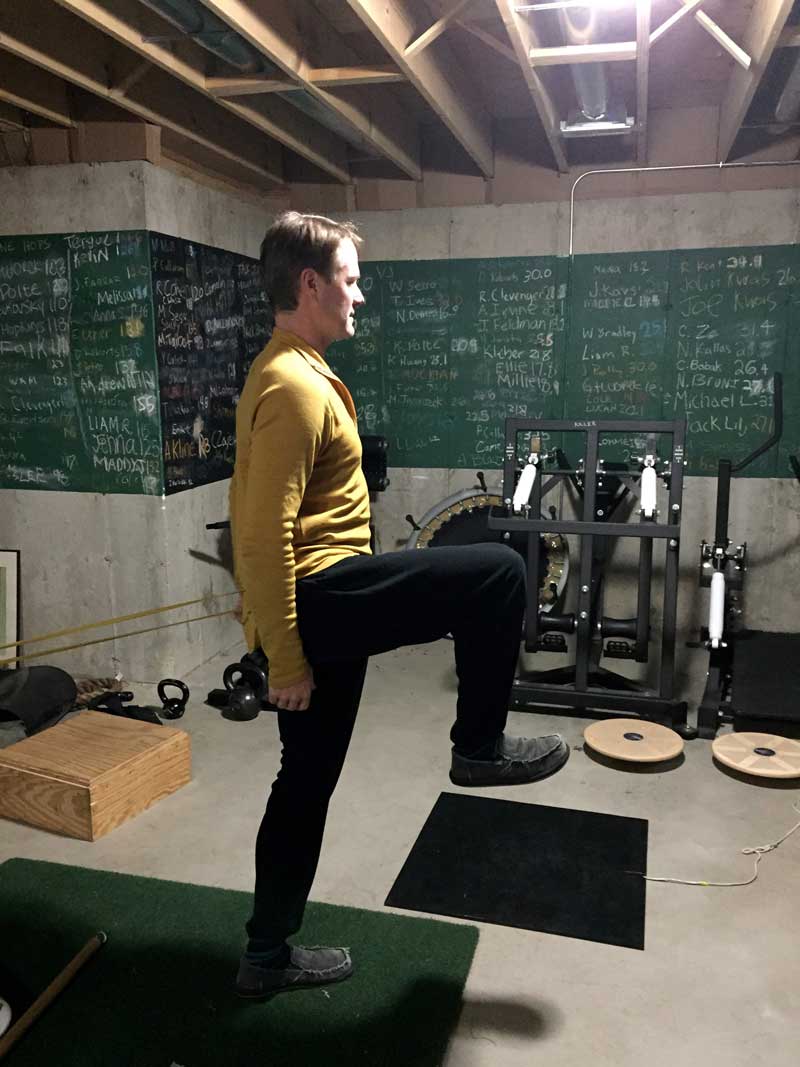

Single Leg Stand
We also do a single leg stand. With the butt bungee on the waist, the athlete will stand on one leg and hold their knee above parallel and hold it for 10-15 seconds. Now we are working the glute of the leg on the ground, which is when you really need it and the psoas of the opposite leg. We are teaching them to work together. An advanced exercise is to do this on the exxentrix kbox. We use the smallest plate possible and work the swing leg thigh from parallel and up- pure psoas. The funny thing is that everyone complains about the burn in the glute of the leg on the ground. (I think this is one of the missing links in training sprinters, the timing of the exercises). There is some cool stuff about the psoas and sprinting. A TV show in Japan did a program comparing Asafa Powell and their national champ to see the difference between the two. Japanese sprinter was much stronger in his traditional lifts. They did a cross-sectional MRI to see muscle differences. The Japanese sprinter had bigger muscles except for the psoas. Powell’s was twice the size. Maybe that is why fast athletes look like they have tennis balls for abs. It is not the size of the rectus but the size of the psoas pushing out the rectus. By the way, Douglas will be in Chicago Feb 7-8 for a Level 1 seminar and a Level 2 the following weekend. To read about the experience, read Tony Holler’s article “You Only Know What You Know”.
You can contact me for info, [email protected].
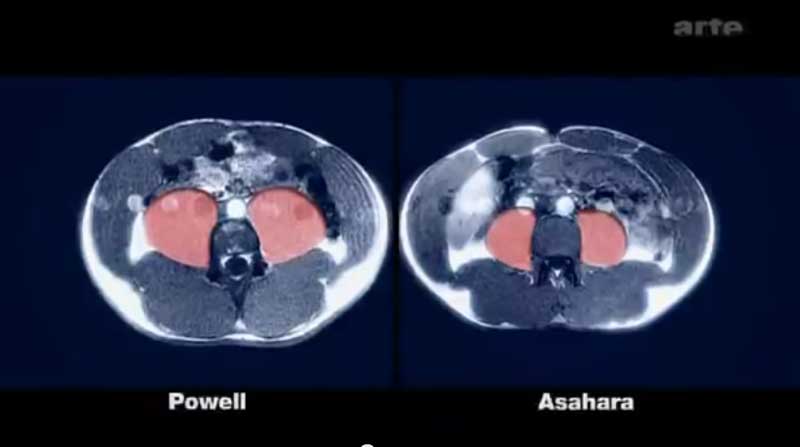

Bungee Exercises
So, that is my basis for my glute development. From there, we go on to other exercises. We start with a bungee on all exercises until they can feel the glute kick, and we wean them off the bungee. I do usually start with the Bret Contreras hip extension. I think that is a great exercise for general development. But, I have not seen a correlation between sprinting and strength in that exercise for faster runners. I have seen a correlation for athletes who are not fast and are weak in the exercise. Their improvement in sprinting coincides with strengthening in the exercise, to a certain point. I try to get people to 500lbs on my contraption. It is not a pure bar push like Bret does. Mine is a home-made machine/rig using straps from Iron mind. I connect the strap between two bars on my Hammer-strength machine and wedge their body under the strap and Glute Bridge up. His books are worth buying. (I know I keep recommending them. I have no stake in the purchase of them. I emailed him once, and that is the extent of my connection.)
The one from his book that there is a connection between fast sprinters and strength in the movement is a 45-degree hyperextension. The trick to teaching the movement is to think that it is a hip thrust and push your hips into the pad to extend the torso. If you feel back, you have extended too far. My best cue is to think of moving your belly button off the pad, so the extension comes from a much lower point. This is the same for the regular parallel position which I also like. We have variations on this as well, straight legs, bent legs, single leg, toes out and toes in for some adductor Magnus. Once you get it, start adding weight. Frans Bosch thought that a powerful athlete should be able to do 2 ½ times his body weight with a single leg. All of my 10.5-10.8 guys could do a ton of weight on these exercises.
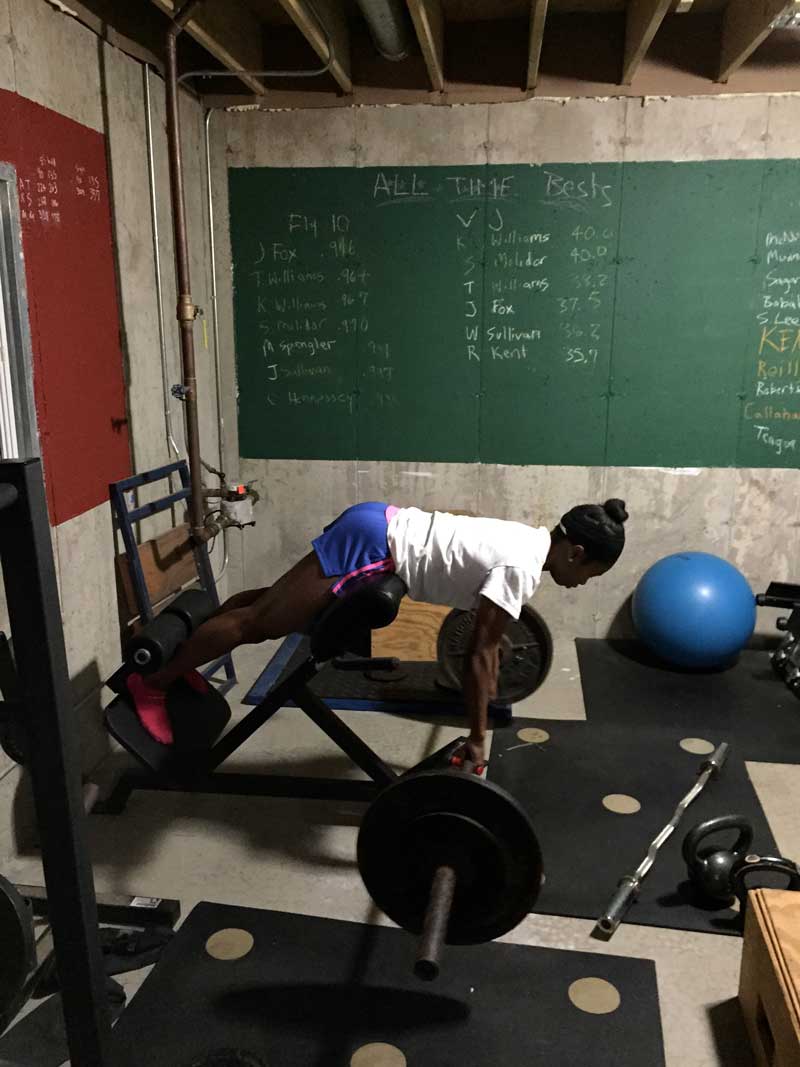
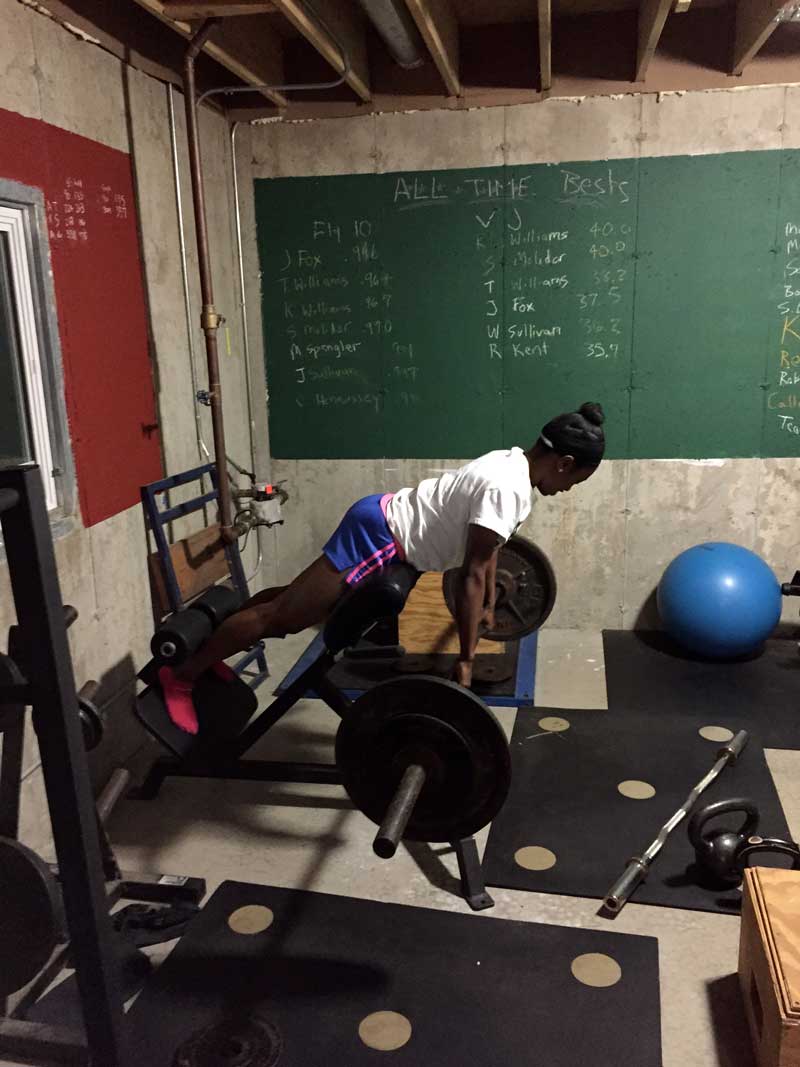
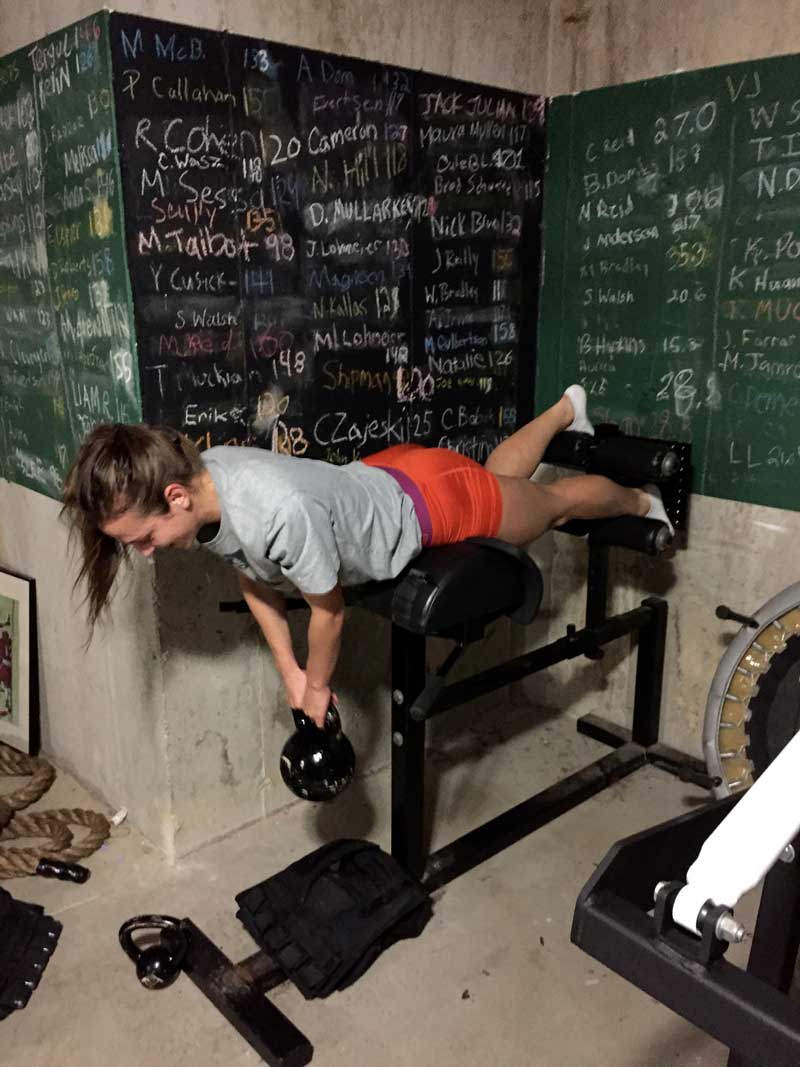

Single Leg Squat
Another staple is the single leg squat. If you read my article, My Love Affair with the Single Leg Squat, you understand why it is in this list. Again, depth isn’t the issue; it is about where you feel it the most in the glute. I have found that the cue of someone pulling the shin forward and hips back tends to get the most out of the glute. I like to hang the weight rather than hold on, so we don’t teach the body to drive from hands but through the glute. We do isometrics, iso and explode, fast, heavy and concentrically from the floor. For block work, sink into a squat and then tilt the torso forward for some extreme stuff. Of course, the kbox is incredible when it comes to a single leg split squat.

Step Up
I am also a step up fan. But I like the version from the Scandinavian sprint coach which I saw floating around. It is a mix of a hip thrust and step up. I have a Jumper Plus from www.docssports.net. I have added height to the back end. I have a box under the harness. We push butt back and jack-knife into the step up. We do it with bands, weight and into jumps.
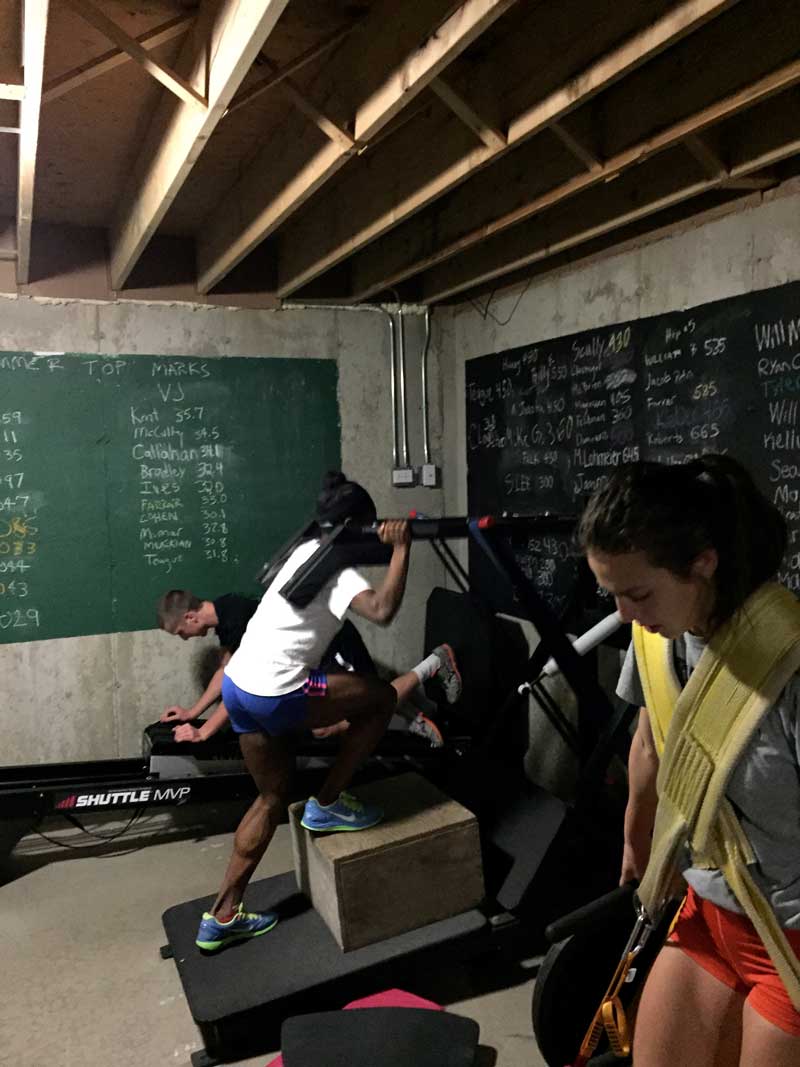
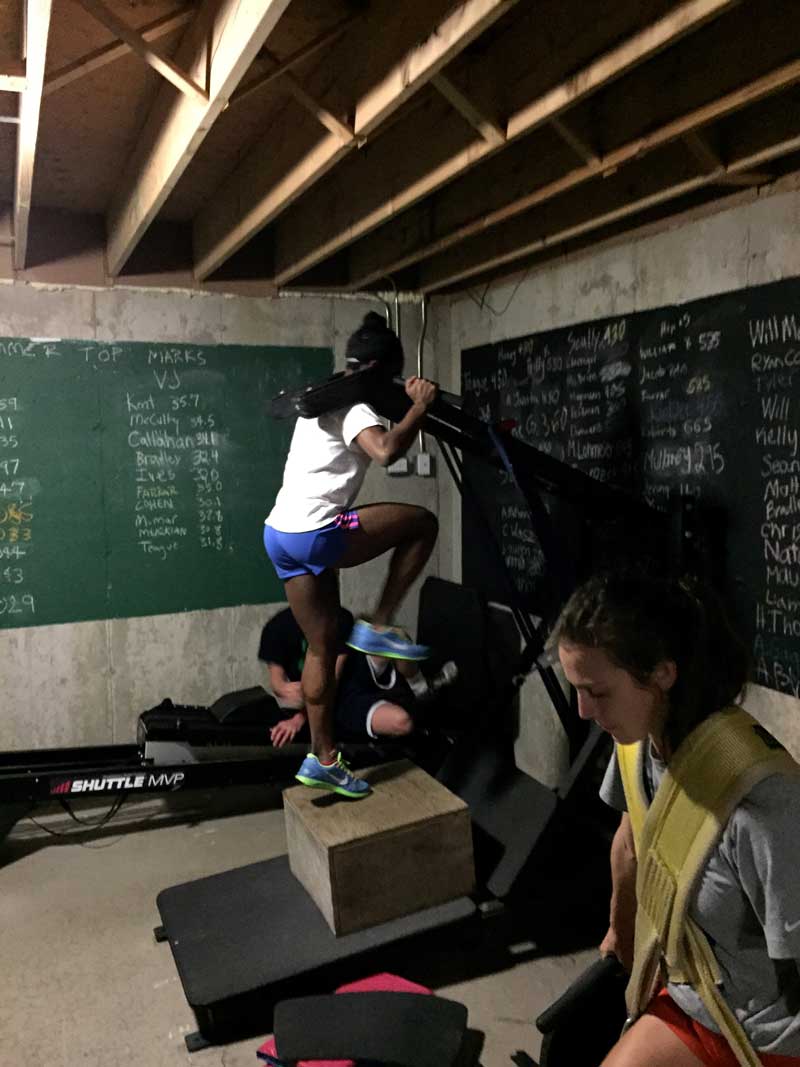
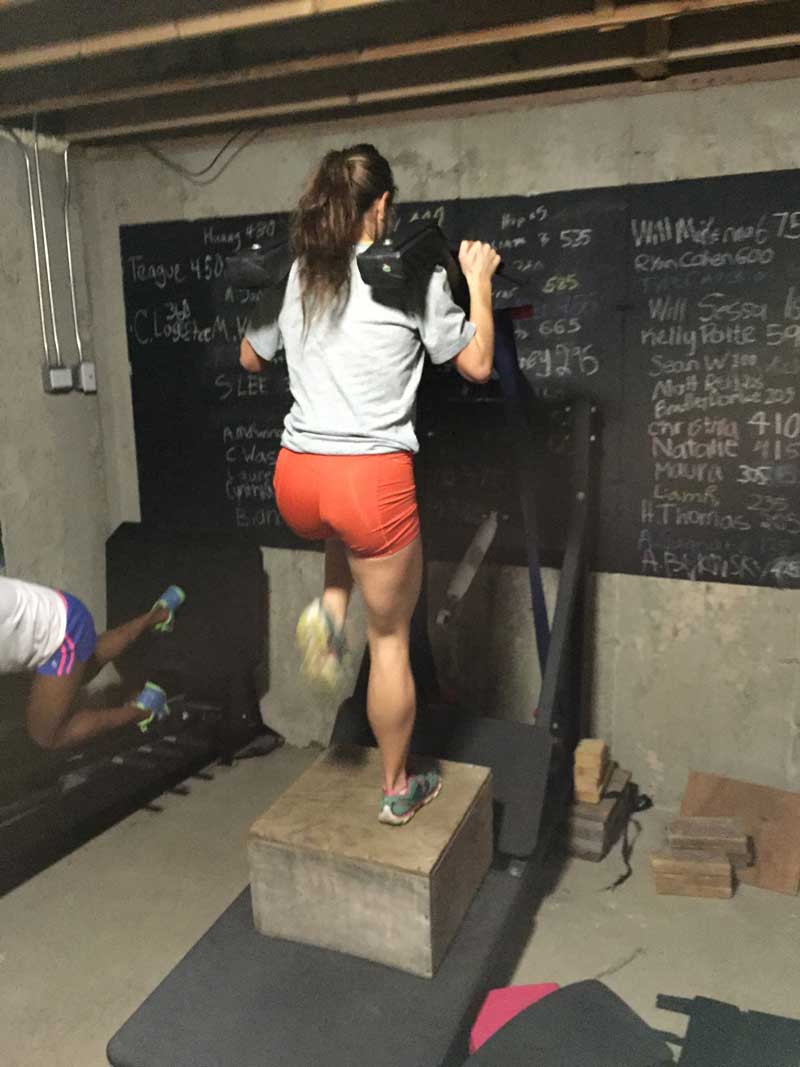

Kickbacks
Kickbacks are also a staple. I got this idea from the U of I coach’s poster that I mentioned in my previous article. He did it on an old Universal machine with the athlete’s shoulder against the dip bar. I use my Shuttle MVP. Kneel down on the sled and kick into the pad. The athlete will launch their body forward, and when they land again, they kick again. Want a great butt workout that will help your sprint, this is it. You can weight this down big time on the Shuttle MVP as well. Talk about developing vertical forces when sprinting. That is the answer. Want to work on ground reaction force and time; here it is in a completely controlled environment. For different force, we will also do this standing up and shoulder harnesses on with the hammer strength deadlift machine with light and heavy weight. Now, the athlete can add bringing the knee through and get up on their toe. And of course, my favorite, the kbox. As a side note, I do measure all of our lifts with my micromuscle lab. I have found, when you measure it, they go harder. Unfortunately, my encoder broke last week, and Ergotest has not responded to my emails for help. I am hoping Carl Valle can help me find a new machine.
Living in Chicago, we have to make the most of our time running outside. Some years, there are not many good days to perform great sprint workouts, which in my opinion, is why Southern/Texas schools have faster times. They get many more good training days. It may be May, but May can sometimes be 40 degrees with winter coats or 30 mile an hour winds that swirl. There is a reason they call it the Windy City and no to the people in New York; we don’t need to hold hands to cross the street (someone asked me that once). Even now, as I am typing in November, it is snowing and will be 14 degrees tonight. We need to make the most out of our indoor time. Instead of weighing your body down with huge weights and feeling beat up for the next three days, try these exercises and feel great, like you can fly.
Since you’re here…
…we have a small favor to ask. More people are reading SimpliFaster than ever, and each week we bring you compelling content from coaches, sport scientists, and physiotherapists who are devoted to building better athletes. Please take a moment to share the articles on social media, engage the authors with questions and comments below, and link to articles when appropriate if you have a blog or participate on forums of related topics. — SF
[mashshare]

